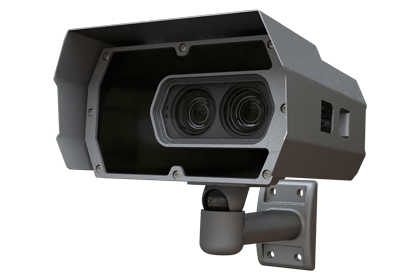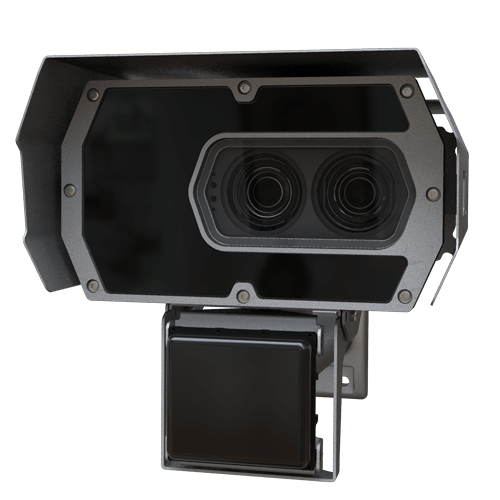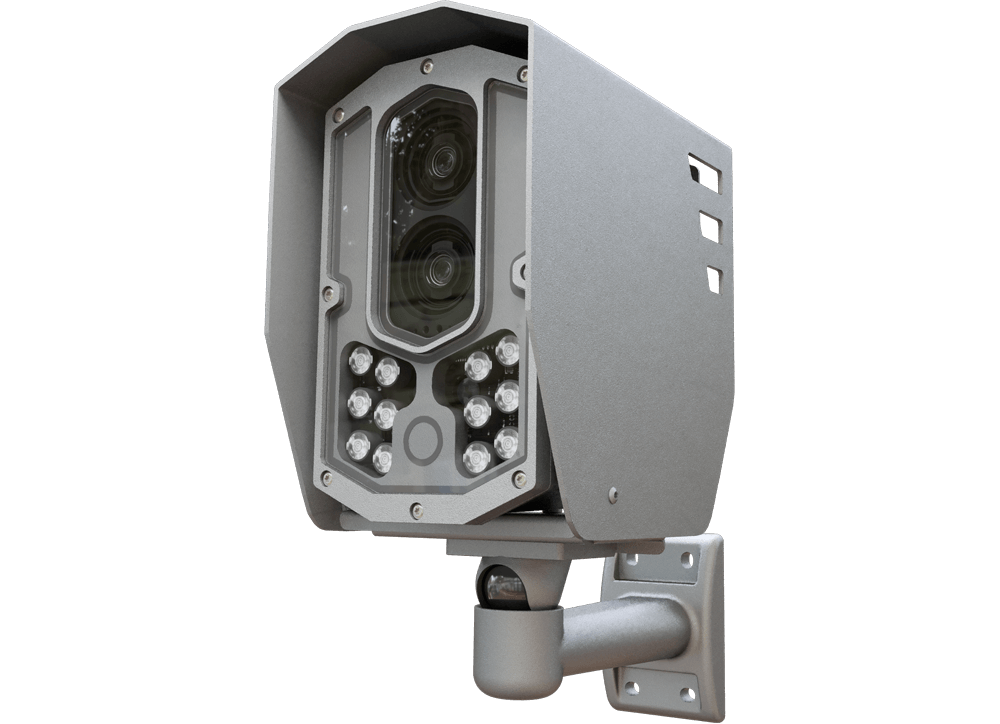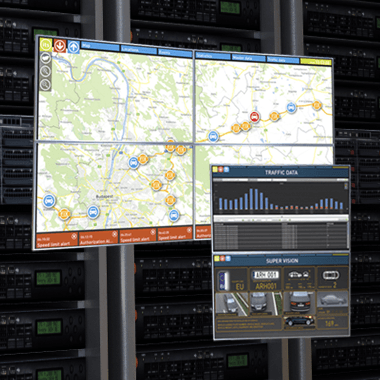
Vidar Camera
- Auto-setup
- Built-in laser trigger
- Dual optic imaging
- Robust and weatherproof design
- Current version of FreewayCAM3
Fixed ANPR/ALPR cameras for traffic monitoring application at any speed up to 300 km/h (185 mph).






You have surely already seen traffic monitoring cameras during your route. Most likely your car’s license plate and its speed have also been recognized and measured.
From small streets to highways, traffic monitoring cameras provide a wide range of functionality. These special cameras are used to monitor the roads and traffic, mostly for safety reasons, e.g. immediately detect incidents and continuously collect real-time and accurate traffic data. But they are also utilized for tolling and maintaining smooth passenger flow.
Traffic monitoring cameras can be seen mounted on traffic light poles or gantries.
The most elementary function of a traffic monitoring camera is vehicle identification, a hardware-assisted or software-based feature that detects if a vehicle is present. It is also called triggering; when the vehicle is present, it triggers the camera to capture an image.
Vehicle identification is highly recommended for ANPR – see below – but it is used for general purposes as well, like traffic counting, measuring the traffic load on a given road, and more.
A key function of most traffic monitoring cameras is Automatic Number Plate Recognition, shortly ANPR. (Sometimes other abbreviations are used, such as LPR – License Plate Recognition – or ALPR – Automatic License Plate Recognition.) Adaptive Recognition was amongst the firsts back in the early ‘90s who started to design work with image processing-based plate recognition.
A traffic camera with ANPR function is usually referred to as an ANPR camera.
ANPR is a traffic surveillance method based on optical character recognition (OCR). A specific OCR algorithm processes captured images or footage to recognize the plate characters. ANPR can be implemented in any traffic related application using an existing CCTV/IP camera system. However, the best option is using dedicated ANPR traffic monitoring cameras, which ensure high recognition rates and true 24/7 operation – such as the models on this page.
Many ANPR providers claim that their software is camera-agnostic, meaning that it does not need proprietary hardware or special ANPR cameras to work effectively. Adaptive Recognition’s ANPR software also supports camera-agnostic operation. In fact, we provide various on-premise and cloud solutions as well.
Still, the best ANPR results will come with purpose-made ANPR cameras. In our case, this does not mean very expensive camera equipment, as we design and manufacture our cameras by our own, robotized factory in the heart of Central Europe. With us, great prices are always combined with uncompromised quality.
Traffic monitoring cameras are often used for measuring speed. These camera models are also called speed cameras. Speed cameras do not just detect speedsters but can be also used for checking the flow of traffic and automatically identifying traffic congestions.
Speed cameras utilize different types of technology to measure speed. The most widespread technologies include radar and laser-based speed measurement. Connected speed cameras – usually as part of an Intelligent Transportation System (ITS) – may even be able to measure average speed as well, simply by comparing the time passed with the distance of a specific vehicle between two measurement points.
Highly sophisticated traffic monitoring cameras – also called as traffic enforcement cameras – are capable of detecting traffic violations as well. These endpoints efficiently process live streams and, using advanced AI technology, they are able to decide whether the traffic has a good service or if there is any irregular driver behaviour that may cause problems in traffic.
Advanced traffic monitoring cameras can detect traffic offenses including but not limited to:
These traffic cameras can even automatically identify or predict accidents and congestion.
When selecting the right model for your traffic management projects, you will need to take into consideration all project requirements, including technical specifications, budget, environmental factors, and more. We listed some factors that are important when selecting the camera.
Thanks to today’s computing capacity, there is the option to include on-board ANPR with your traffic monitoring cameras. In such a case, the license plate recognition runs on the camera itself, and the output of the unit is the ready-to-use digital ANPR data.
However, there are several applications where server-based processing is more advantageous. When selecting traffic camera, it can be a decision factor whether it should include on-board ANPR or not.
Depending on the application type, speed cameras may be required. Our models are available with or without this option.
You can even get average speed or section speed data between two measuring points by utilizing our powerful traffic data back office system, the Globessey Data Server (GDS).
Traffic monitoring cameras can be installed and used in three ways: